2017.06 ASTM E54.09, Toronto, Canada
2017 - June 12-14
ASTM E54.09 Standard Committee Meeting
Hamilton Port Authority; Toronto, Canada
-
Committee Overview
- Media Highlights
- Meeting Outcomes (NEW)
- Invitation
-
Registration
-
Agenda
-
Venue
-
Dress Code
-
Hotel
-
Questions/Contacts
Over the past few years our suite of 30 ground robot test methods have been adopted widely across the U.S. and internationally to support purchasing and training. We are now expanding our efforts to develop test methods for small unmanned aircraft systems (sUAS) defined by the FAA as under 25kg (55lbs) and for underwater remotely operated vehicles for hazardous environments.
Remotely operated robots enable emergency responders to perform extremely hazardous tasks from safer stand-off distances. Standard test methods help robot manufacturers and users objectively evaluate system capabilities to align with mission requirements. This improves the safety and effectiveness of emergency responders as they attempt to save lives and protect property in our communities.
The ASTM International Standards Committee on Homeland Security Applications: Response Robots (E54.09) is developing the standards infrastructure necessary to inspire innovation, inform purchasing decisions, and focus training with measures of operator proficiency. Adam Jacoff from NIST’s Intelligent Systems Division chairs the sub-committee with his team of robotics researchers and collaborators from all over the world. The standards committee is made up of robot manufacturers, emergency responders, test administrators, program managers, and others interested in developing the underlying measurement science necessary to quantitatively evaluate and compare robotic system capabilities and operator proficiencies.
This effort has been sponsored by the Department of Homeland Security, Science & Technology Directorate, Capability Development Support Group, Office of Standards. They along with other sponsors have facilitated these standards committee meetings and associated test method validation exercises for nearly fifty test methods for ground, aerial, and aquatic systems.
Summary of Standards Committee Meeting and Validation Exercise hosted in Hamilton, Ontario
This meeting and exercise was hosted at the Hamilton Port Authority, Ontario, Canada. More than twenty robots provided by manufacturers, emergency responders, and military organizations evaluated their robotic capabilities and operator proficiencies within the test methods. Test administrators from collaborating facilities around the world conducted trials to learn about and validate the test methods. They also helped devise new tests to address emerging requirements articulated by responders at the meeting.

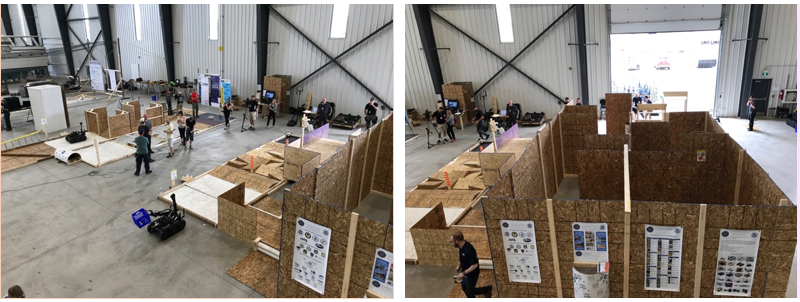
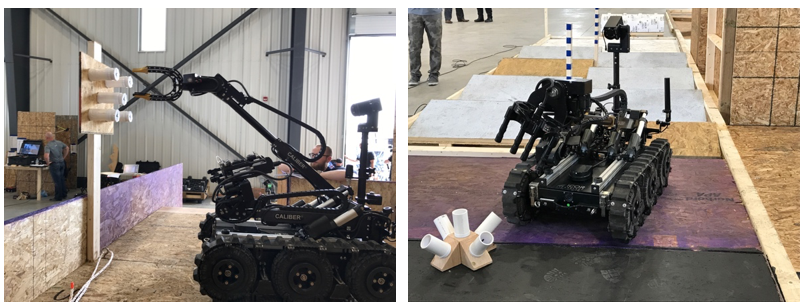
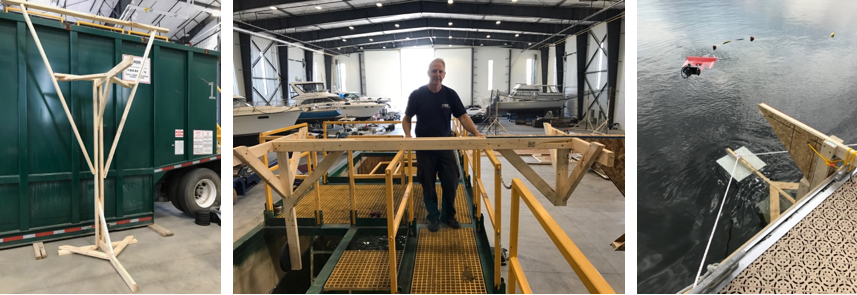
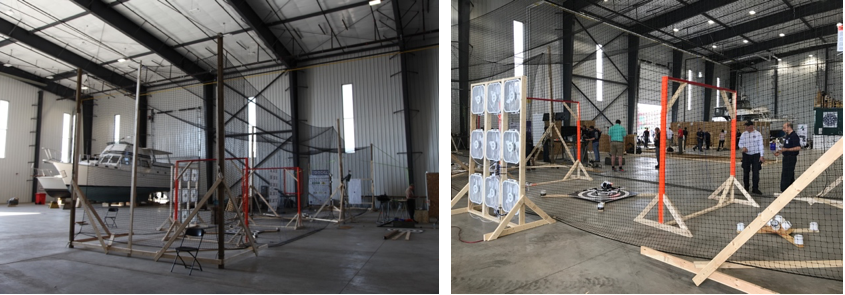
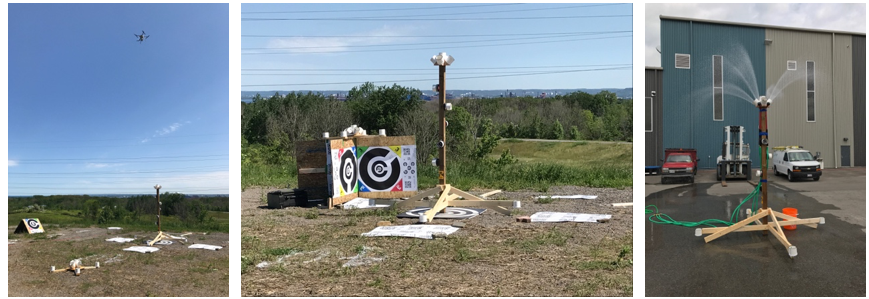
To download the complete report:
dhs-nist-astm_e54.09_response_robots_meeting_and_exercise_toronto_canada.pdf
News interview with President of the Canadian Explosives Technicians Association
https://www.thespec.com/videopopup/7369896?popUp=true
Local news
http://www.chch.com/bomb-disposal-robots/
Other media
https://motherboard.vice.com/en_us/article/these-robots-will-explore-tunnels-dug-by-looters-in-egypt
The ASTM International Standards Committee on Homeland Security Applications; Response Robots (E54.09) will be hosting a meeting and associated response robot exercise to validate test methods for remotely operated and autonomous ground, aerial, and aquatic systems. The resulting standard test methods can be used by anybody to measure and compare system capabilities and operator proficiency.
Key discussion topics will include:
- Fifty test methods including apparatuses, procedures, and performance metrics
- Collaborating test facilities worldwide that host the standards
- Test method balloting status and priorities going forward
- Response Robots Capabilities Compendium allowing filtering of test results to address mission requirements
- Training within the test methods as standard measures of operator proficiency
The associated test method validation exercise will involve most of the test methods under development. International test administrators from collaborating facilities will help set up and administer the test methods. We will validate and refine the test methods with regional emergency responders and manufacturers using their own systems to practice the tests. Manufacturers will measure baseline system capabilities. Regional responders will focus their training and measure their proficiency in head-to-head trials. They will be using their own robots to perform a sequence of standard tasks used during four other regional Robot Rodeos with more than one hundred bomb technicians throughout the U.S. in 2016-2017. This enables direct comparison of their proficiency to regional and national averages.
The test methods will include:
- 15 ground system test methods focusing on Maneuvering, Mobility, Dexterity, Tool Deployment, Sensing, Endurance, and Radio Comms necessary to conduct missions involving improvised explosive devices, urban search and rescue, accessing and mapping buildings, and others.
- 15 small unmanned aircraft system (sUAS) test methods for Maneuvering, Situational Awareness, Sensing, Endurance, and Mapping necessary to conduct missions involving search and rescue, infrastructure inspection, accident reconstruction, and others.
- 15 Aquatic system test methods focusing on maneuvering, dexterity, tool deployment, and other capabilities necessary to conduct missions involving underwater improvised explosive devices.
Online Pre-Registration is REQUIRED to participate in the ASTM International Standards Committee on Homeland Security Applications; Response Robots (E54.09) Meeting and Associated Test Method Validation Exercise:
Register for the upcoming meeting and exercise online. It is FREE if you choose not to pay the VOLUNTARY ACTIVITY FEE on the registration page. When the dialogue box asks again you can simply PROCEED WITH PRE-REGISTERING. Of course, you may contribute to ASTM if you wish. You do not need to join ASTM to attend the meeting and exercise, it is open to the public.
http://tinyurl.com/ASTME54-Reg-June2017
Our new ASTM International Standards Committee on Homeland Security Applications; Response Robots (E54.09) is official.
Join or transfer to our new sub-committee on Response Robots (E54.09) here:
https://www.astm.org/MEMBERSHIP/index.html
If you were a member of the Operational Equipment (E54.08) sub-committee, you are not automatically a member of the new Response Robots (E54.09) sub-committee. So please go online and either shift or add your affiliation to our new sub-committee. You do not need to give up your position on any other sub-committee if your interests remain.
Monday, June 12 2017
Robots begin operating in ground, aerial, and aquatic test methods either for practice or to capture proctored test method validation trials. Regional responder VIPs meet and tour prior to meeting.
0900 Regional Responder VIP Meeting and Tour
- Travel for attendees
- Test administrator training
- Robot practice in test methods
1200 Lunch served on site, robots continue testing so everybody can watch.
1300 E54.09 Committee Business
- Introductions around the room
- Collaborating lest facilities worldwide, particular use cases, and other standard test method initiatives.
- Robot purchases recently specified within our suite of standard test methods
- Response Robot Capabilities Compendium (v2015-16) overview and filtering interface, bar charts, etc.
- Robot competitions using our test methods as challenge tasks to guide innovation and measure progress in emerging capabilities and autonomy.
- Responder and military training events using our standard test methods to focus training and measure operator proficiency.
1600 Tour Test Method Exercise
1800 Done.
Tuesday, June 13 2017
Robots continue operating ground, aerial, and aquatic test methods either for practice or to capture proctored test method validation trials.
0830 SAFETY BRIEFING for all the day's attendees
0900 GROUND TEST METHOD MEETING
(Ground system testing will be continuous all day every day)
- Configuration Identification and Sensors
- Maneuvering (basic training)
- Radio Comms
- Mission Combo Sequences: Building Access
1200 Lunch served on site, robots continue testing so everybody can watch.
1300 AERIAL TEST METHOD MEETING
(Aerial system testing will be continuous all day every day)
- Impact Forces (video only)
- Maneuvering Suite
- Situational Awareness Suite
- Outline of next day's outside aerial testing (off-site)
1800 Done.
_____________________________________________________________
Wednesday, June 14 2017
Robots continue operating in dozens of chosen standard test methods attempting to establish statistically significant performance for responders to consider. (Note: 0800-1300 Adam is at Exec Committee meeting in Toronto.)
0830 SAFETY BRIEFING for all the day's attendees
0900 AQUATIC TEST METHOD MEETING
(Aquatic system testing will be continuous all day every day)
- C-IED suite
1200 Lunch served on site, robots continue testing so everybody can watch.
1300 AERIAL SYSTEM TESTIN OUTDOORS (OFF SITE)
- Relocate and set up test apparatuses
- Situational Awareness Suite
- Mapping Test Method (stitched images containing 10-30 objects of interest)
1800 Done.
Hamilton Port Authority
Harbor West Marina
210 Hillyard Street
Hamilton, Ontario L8L 6B6
They are providing access to a new 150 x 270 ft boat hangar to contain our ground tests, netted aviary, and a 21,000 gallon water tank.
This event will consist of equal parts meetings and test method evaluations with robots indoors and outside. So proper dress is required, including long pants and closed toe shoes. Responders please wear your insignias.
Waterfront Hotel
2020 Lakeshore Road, L7R 4G8 Burlington, Canada
http://www.waterfronthotelburlington.com/
Only has rooms starting on June 11. Onsite Restaurant, lakefront area, walkable, 15 minutes from venue.
Hilton Garden Inn Toronto/Burlington
985 Syscon Road, Burlington, Ontario, L7L 5S3, Canada
Phone: 1-905-631-7000
(link is external
In addition to ASTM staff, you can visit RobotTestMethods.nist.gov and/or email RobotTestMethod [at] nist.gov (RobotTestMethod[at]nist[dot]gov (link sends e-mail)).
Adam Jacoff - Project Leader
RobotTestMethods [at] nist.gov (RobotTestMethods[at]nist[dot]gov)
Adam.Jacoff [at] nist.gov (Adam[dot]Jacoff[at]nist[dot]gov)
301-975-4235

